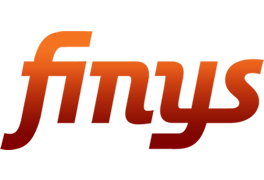Configure This
In the early 2000s, policy admin vendors whose systems had tools were at a distinct advantage. Vendors that didn’t have tools would blanch at the notion of competing for business: “We can’t beat those guys. They have tools!” That was then. This is now. Configuration toolsets have become table stakes. If you’re a vendor — and if you don’t offer a configuration toolset — you’re not in the game. Period. In fact, configuration toolsets have become so ubiquitous, their value is almost overlooked. It shouldn’t be.
These days, configuration toolsets enable insurers to configure their own systems; to modify and maintain products; to create and market new products; to tailor policies to specific customer needs, risks, and requirements; and to do all those things without carrying the overhead of huge IT departments. In addition, configuration toolsets allow insurers to:
- Customize coverages: By selecting from a range of policy features and business rules, insurers can develop policies that address unique exposures, such as specialized equipment or business operations.
- Mitigate risk: Configuration toolsets help underwriters assess, select, and manage risks more effectively, reducing the likelihood of unexpected losses or claims.
- Improve customer satisfaction: By offering tailored policies, insurers can better meet the needs and desires of their policyholders, increasing satisfaction, loyalty, and retention.
- Enhance competitiveness: Because responsiveness is king, insurers that are able to use advanced configuration toolsets are also able to compete more aggressively, to differentiate themselves from their competitors, and to attract customers that want and need flexibility and customized coverages.
What’s Next?
While no one has a crystal ball or a Ouija board, insurance configuration toolsets are likely to evolve towards increased automation and digitalization. (Both are givens at this point.) Here are just a few of the things that are likely to happen:
- As insurers find ways to take greater advantage of tools like artificial intelligence (AI), augmented reality (AR), and optical character recognition (OCR), manual processes in back-office operations will continue to be reduced, while personal touches in things like strategic and customer-facing activities will continue to increase.
- The integration of telematics, wearables, and connected devices will give insurers more personalized data on policyholders, enabling underwriters to make more informed decisions and to offer tailored risk coverages and financial offers.
- Insurance shopping platforms and digital tools will continue to expand distribution channels, letting customers compare products, review testimonials, and find plans that meet their needs.
- Advanced visual capabilities, including geolocation, OCR, AR, AI, and drones, will let agents collect data more efficiently, reduce unnecessary travel, and speed up claim resolution.
Our inability to predict the future notwithstanding, we can be sure configuration toolsets aren’t going anywhere. That’s why we continue to refine and enhance our Design Studio.
We can’t see the future. But we’re already ready for it.





Leave a Reply
Want to join the discussion?Feel free to contribute!